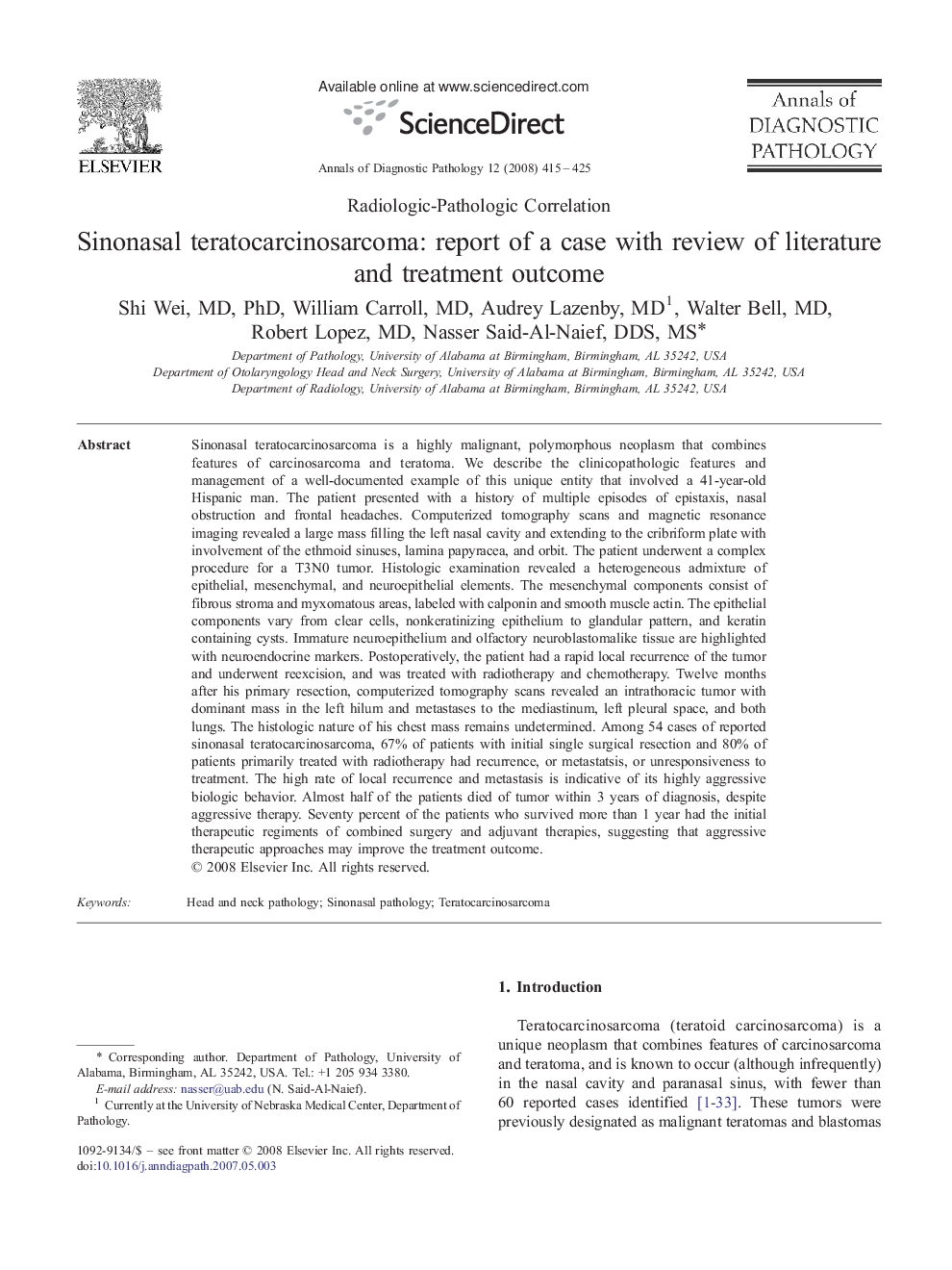| Article ID | Journal | Published Year | Pages | File Type |
|---|---|---|---|---|
| 4130496 | Annals of Diagnostic Pathology | 2008 | 11 Pages |
Sinonasal teratocarcinosarcoma is a highly malignant, polymorphous neoplasm that combines features of carcinosarcoma and teratoma. We describe the clinicopathologic features and management of a well-documented example of this unique entity that involved a 41-year-old Hispanic man. The patient presented with a history of multiple episodes of epistaxis, nasal obstruction and frontal headaches. Computerized tomography scans and magnetic resonance imaging revealed a large mass filling the left nasal cavity and extending to the cribriform plate with involvement of the ethmoid sinuses, lamina papyracea, and orbit. The patient underwent a complex procedure for a T3N0 tumor. Histologic examination revealed a heterogeneous admixture of epithelial, mesenchymal, and neuroepithelial elements. The mesenchymal components consist of fibrous stroma and myxomatous areas, labeled with calponin and smooth muscle actin. The epithelial components vary from clear cells, nonkeratinizing epithelium to glandular pattern, and keratin containing cysts. Immature neuroepithelium and olfactory neuroblastomalike tissue are highlighted with neuroendocrine markers. Postoperatively, the patient had a rapid local recurrence of the tumor and underwent reexcision, and was treated with radiotherapy and chemotherapy. Twelve months after his primary resection, computerized tomography scans revealed an intrathoracic tumor with dominant mass in the left hilum and metastases to the mediastinum, left pleural space, and both lungs. The histologic nature of his chest mass remains undetermined. Among 54 cases of reported sinonasal teratocarcinosarcoma, 67% of patients with initial single surgical resection and 80% of patients primarily treated with radiotherapy had recurrence, or metastatsis, or unresponsiveness to treatment. The high rate of local recurrence and metastasis is indicative of its highly aggressive biologic behavior. Almost half of the patients died of tumor within 3 years of diagnosis, despite aggressive therapy. Seventy percent of the patients who survived more than 1 year had the initial therapeutic regiments of combined surgery and adjuvant therapies, suggesting that aggressive therapeutic approaches may improve the treatment outcome.
